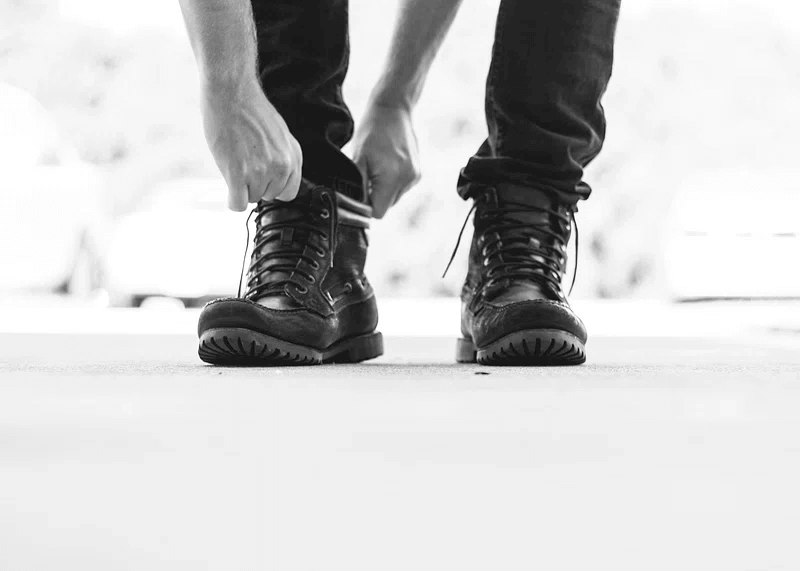Breaking in rubber boots can be a killing task, as new boots are frequently stiff and uncomfortable when new. Even so, with the right ways and a little sufferance, you can make your rubber boots more comfortable and flexible.
In this guide, we will outline some effective ways to help you break in your rubber boots and ensure a better fit.
Why Wearing Rubber Boots Is Such a Pain?
It can sometimes be uncomfortable and annoying to wear new rubber work boots due to its features.
Some rubber work boots are designed to offer support and stability features to protect your feet. You may walk through some roots, rocks and rugged roads. The stiffness of boots is an important feature to protect your feet from the shock and injuries caused by those obstacles.
Also, rubber boots are also designed to withstand heavy weather or bad conditions, so hard waterproof rubbers are used in the production of rubber boots to provide durability and longevity.
Due to these features, rubber boots can be uncomfortable when you first wear them. It can even cause some serious foot-related issues such as blisters and chafing.
There are steps that need to be taken first to soften the boots and allow your feet to get used to the boots before you can wear them for long periods of time.
How To Break In Rubber Boots?
In order to quickly overcome these challenges, there are some effective ways you can try to break in your rubber boots in a day:
Select The Right Size
To better fit in your rubber boots, the first crucial thing to do is to select the perfect right size for your boots. It is advised that you carefully measure your feet using the right tape with the professional way to ensure a correct fit.
Not only to measure the lengths and widths of your feet, but also pay attention to the types of your feet. For example, if your shoe size is a #12, but you have a big toe valgus, then you need to choose one size up to allow space for your toe to wiggle. In this way, you won’t feel constrained.
For how to choose the right size, there is a complete guide for your reference: KalKal Boot Size Guide.
Gradual Wear and Practice
You can wear your new rubber work boots for a day and give your feet time to adjust to them before taking them on a long stroll.
You should wear these boots to do some light activities around the house and allow the boots to mold to your feet.
It is a good option to wear thick socks or multiple pairs of socks along with the break-in process. This can also reduce the friction between your feet and the boots and make you feel more comfortable.
Moisture and Heat
Using moisture and heat to break in rubber boots can also be useful. You need to prepare some warm water and boot stretching spray. These things can help soften the rubber.
Furthermore, adding heat to the boots, such as using a special boot dryer or simply a hair dryer to warm your rubber boots for a period of time to loosen the material.
The combination of moisture and heat increases the flexibility of the rubber, making it easier to mold and conform to the contour of your foot. To avoid damage to the boots, however, it is critical to take caution and follow manufacturer restrictions.
Stretching the Boots
Investing in a boot stretcher made especially for rubber boots is a great supplementary strategy to help with the breaking-in process. These unique stretchers are made to gently extend the rubber substance, easing discomfort and tightness.
Using the boot stretcher to apply little pressure to the targeted areas while adjusting the stretcher to the desired level of stretching.
It is advised to leave the stretcher inside the boots for more hours or a day. This method of gradual stretching makes it possible to achieve a more comfortable fit for your boots.
You may also want to check: A Step-by-Step Guide on How to Stretch Rubber Boots
Rubber Boots Maintenance and Cares
To guarantee the effectiveness and lifespan of rubber work boots, it is essential to take care of them regularly. Remember to get rid of the dirt, mud or any materials that attach to your boots after use.
It is also advisable to hand wash your boots and not just throw them into a washing machine. Use a moderate soap and warm water to gently scrub the surface, and avoid using some chemical detergents which can damage the rubber.
After cleaning, put the boots in a ventilated place and let it air dry naturally. Don’t lay them dry under the sun for a long time, which can result in warping and cracking.
Last, apply a rubber conditioner or protectant to keep the rubber in top shape. These items aid in preserving the rubber’s suppleness, flexibility, and resistance to drying out or cracking. the manufacturer’s instructions.
Conclusion
In conclusion, breaking in rubber boots is essential for achieving the best performance and comfort. You can successfully get over the first discomforts related to new rubber boots by using the true techniques described in this article to speed up the break-in process.
After breaking in your rubber boots, it’s equally crucial to properly maintain and care for them. Their longevity will be increased by routine cleaning. With a little effort, you can enjoy the benefits of well-fitted rubber boots for years to come.





















Leave a reply